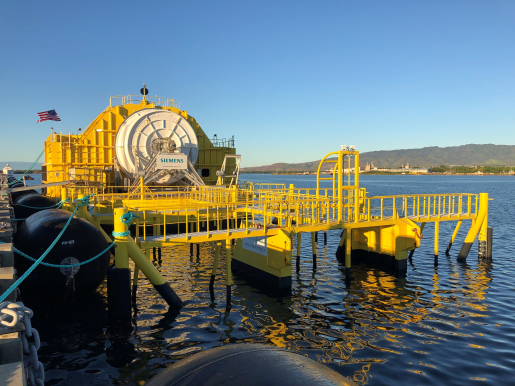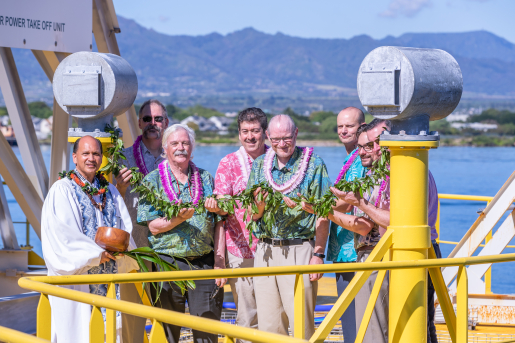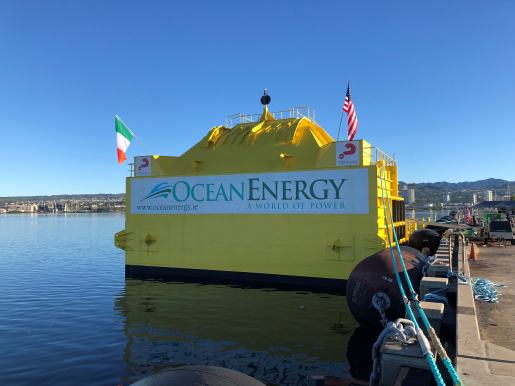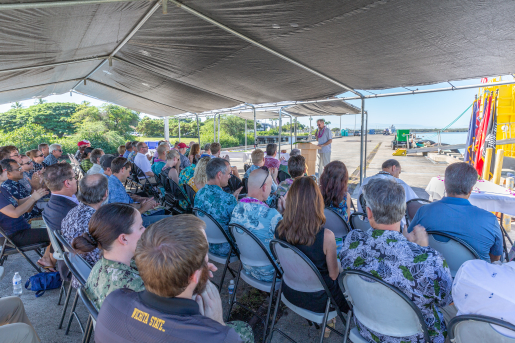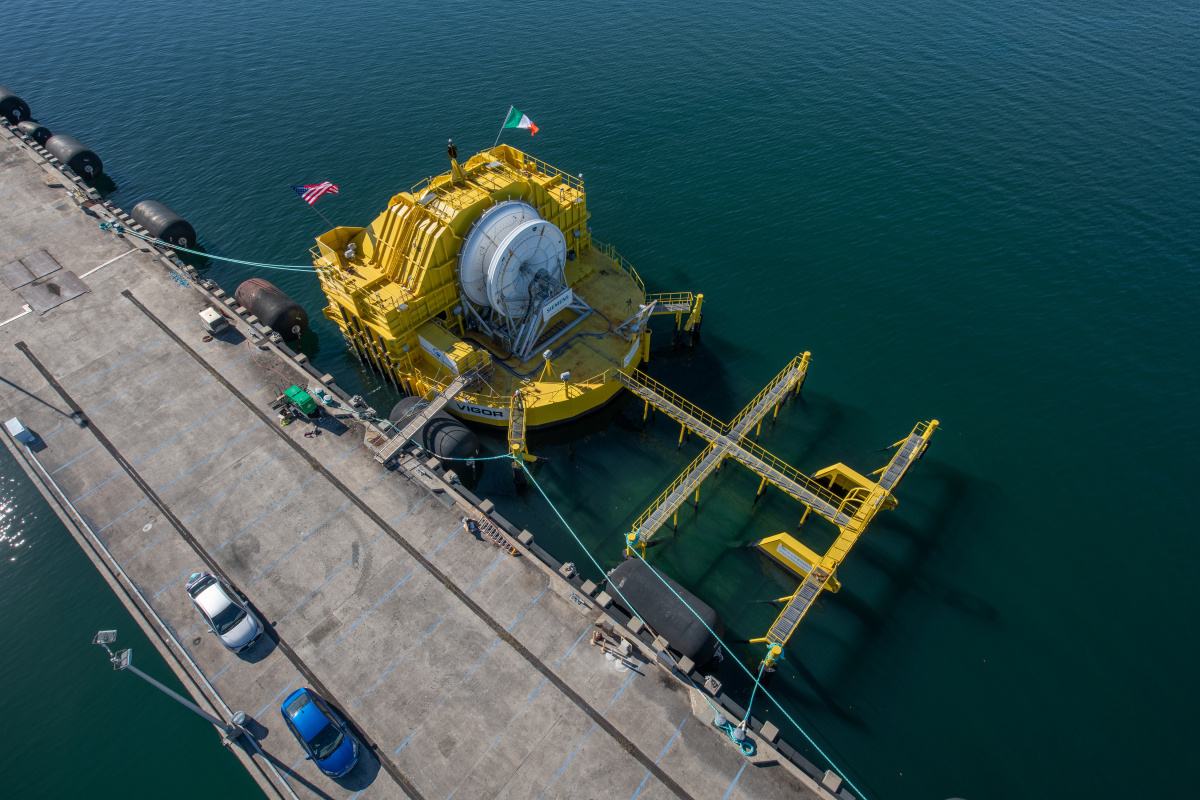Ocean Energy (OE) Buoy has arrived at Joint Base Pearl Harbor-Hickman in Hawaii for a ribbon cutting.
Water Power Technologies Office
December 11, 2019After more than a decade of technology development and five years of engineering, design, and fabrication, the Energy Department-funded Ocean Energy (OE) Buoy has arrived at Joint Base Pearl Harbor-Hickman in Hawaii for a ribbon cutting. As is custom prior to the launch of a device, the Navy opened its doors for the official christening of the buoy, which saw attendance from project partners at the U.S. Department of Energy’s (DOE) Water Power Technologies Office (WPTO) within the Office of Energy Efficiency and Renewable Energy, the Sustainable Energy Authority of Ireland, Siemens Government Technologies (SGT), and more. As a critical step toward the large-scale validation of commercial, grid-connected wave energy devices in the United States, the deployment of the buoy demonstrates the value of national level partnerships for the benefit of the marine energy industry.
Featuring a 500 kilowatt turbine designed by SGT, OE’s oscillating water column (OWC) buoy will undergo 12 months of open ocean, grid-connected testing at the Navy’s Wave Energy Test Site (WETS), a scale of which has never been seen in the United States. In order to withstand the vigor of ocean-based deployment, the OE Buoy has been outfitted with reinforced materials, aluminum, and stainless steel to negate corrosion. The buoy is also coated with anti-biofouling paint for increased longevity in harsh marine environments. One of the buoy’s most distinguishing features is its 35 meter, 826-ton hull, which was fabricated throughout 2019 by Oregon-based Vigor, a ship building and maintenance company that designs, tests, and constructs navy stealth boats, combat ships, barges and more. In parallel, SGT and Vigor assembled SGT’s turbine and generator power take-off system, a process which involved electrical and mechanical integration of the drivetrain components onto a steel skid, the loading platform for the device.
Originally funded by DOE in 2014, development of OE’s OWC has been in motion since 2001 and has included several rounds of scaled testing at the Galway Bay Ireland Test Site. All testing at WETS will be conducted through an interagency partnership with the U.S. Navy Facilities Engineering Command, organized through a Cooperative Research and Development Agreement. OE, DOE, and the Navy will collect a comprehensive set of measurements over the 12 month period to enable quantitative comparisons of wave energy converter system cost, performance, and reliability. The WETS-based test results will confirm the large-scale commercial viability of the technologies and provide confidence to move forward with commercialization efforts.


